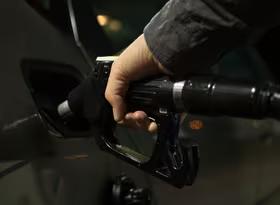The rental car market needs international tourism
Last month we looked at how quickly international travel will return as New Zealand’s borders reopen. Evidence from people movements between other countries suggests an eagerness to travel again, especially if there are no restrictions. For example, flight numbers between the US and Mexico are now sitting above pre-pandemic levels.
Within the last few weeks, there has been more clarity about what is happening with our borders. Given this information, we expect tourist arrivals to start picking up again by the end of this year. The car rental market is strongly driven by tourism, so freer movement across borders will be a long-awaited relief for these businesses. However, looking at the gigantic crash in rental car registrations due to COVID-19, its slow recovery thus far, and the border plan, we think there will still be a long way to go, even by the end of 2022.
Mild relief from strong domestic tourism
Annual rental car registrations fell by 85% in the year following the initial COVID-19 outbreak. They have since recovered to more than triple that low point, but at under 10,000pa, registrations are still well below pre-pandemic levels (see Chart 1).
The trans-Tasman bubble provided some relief in mid-2021, but it was short-lived. Although domestic tourism has boomed over the last few years, this spending doesn’t translate into rental car hiring as much as international tourism. Kiwis are far more likely to drive to their destination or know someone with a car in their holiday spot. So the rental market still eagerly awaits the border reopening.
Five steps to reconnect New Zealand
The government’s latest border reopening plan is as follows.
- On February 28, fully vaccinated Kiwis and other currently eligible travellers from Australia will be able to self-isolate rather than going into MIQ.
- Two weeks later, fully vaccinated New Zealanders and other currently eligible travellers from the rest of the world will also be able to travel into New Zealand without going through MIQ.
- On April 13, a large international student cohort of up to 5,000 students are allowed for entry ahead of semester 2, and temporary visa holders who still meet relevant visa requirements will also be allowed into the country.
- Australians and all other visitors and business travellers who can normally enter New Zealand without a visa will subsequently be allowed to enter, with the date “expected no later than July.”
- In October all other visitors and students who require a visa will be allowed to enter New Zealand, with the resumption of normal visa processing.
These announcements give some clarity on what to expect, and they are good news for returning Kiwis and businesses reliant on migration. Rental car demand will grow to meet longer-term travellers who aren’t worried about losing a week spent in self-isolation. However, this timeline does not really provide any indication of when to expect a reasonable return in international tourism. With required self-isolation of seven days, and a growing number of less-restrictive travel options for the rest of the world, why would you come for a holiday in New Zealand? The government did recognise they would monitor the need for self-isolation and there would be a time “in the not too distant future…” when self-isolation would no longer be required. However, overseas holidays require planning, and vague plans to remove quarantine requirements will put off many travellers for the time being.
International tourism is kicking off across the globe after two years of people being stuck at home with wanderlust. New Zealand is a bit behind as far as reopening borders is concerned. International evidence has shown that Omicron outbreaks tend to be explosive but short lived. Although the long-awaited boost to international travel is still months away, at least there’s some light at the end of the tunnel for rental cars.


















